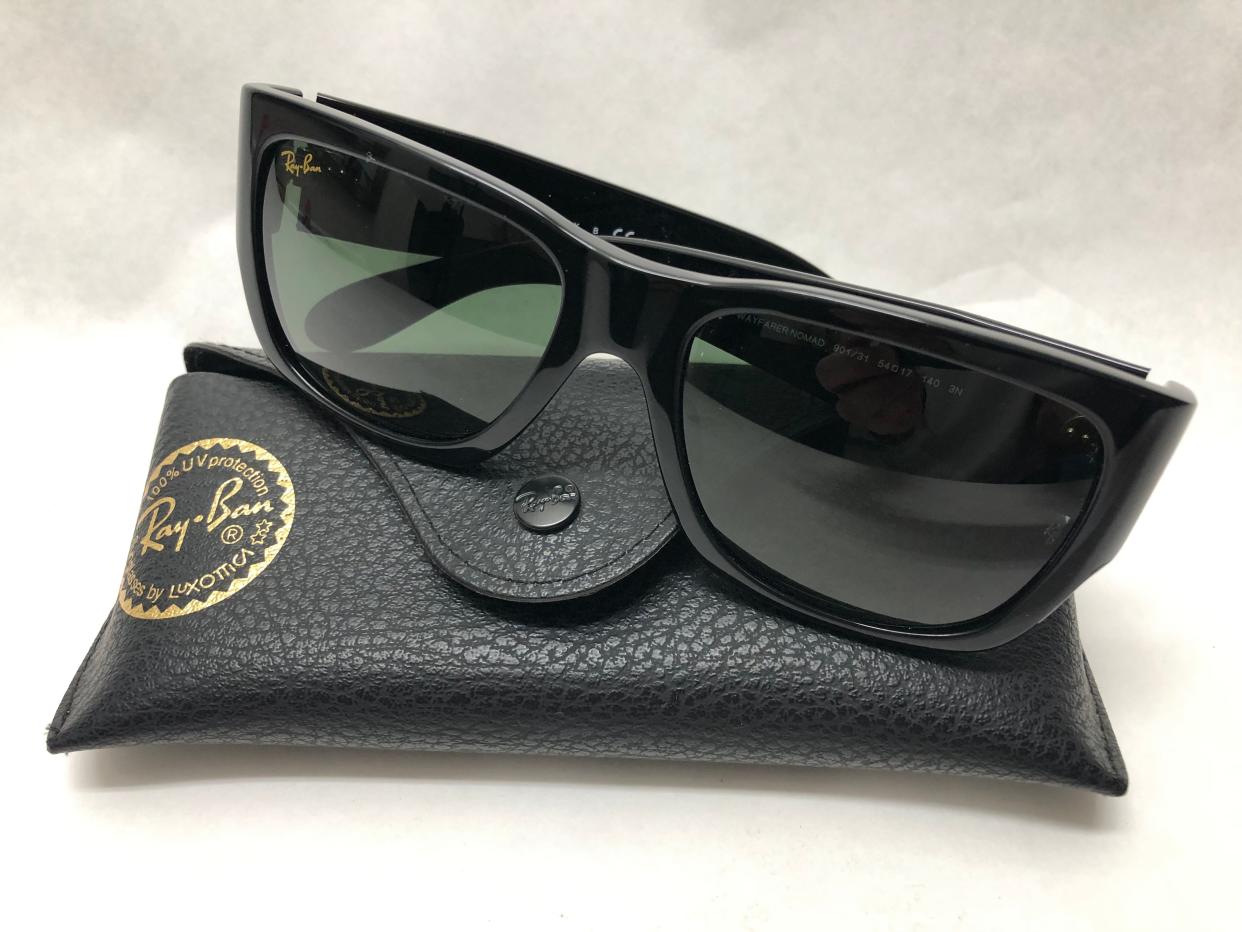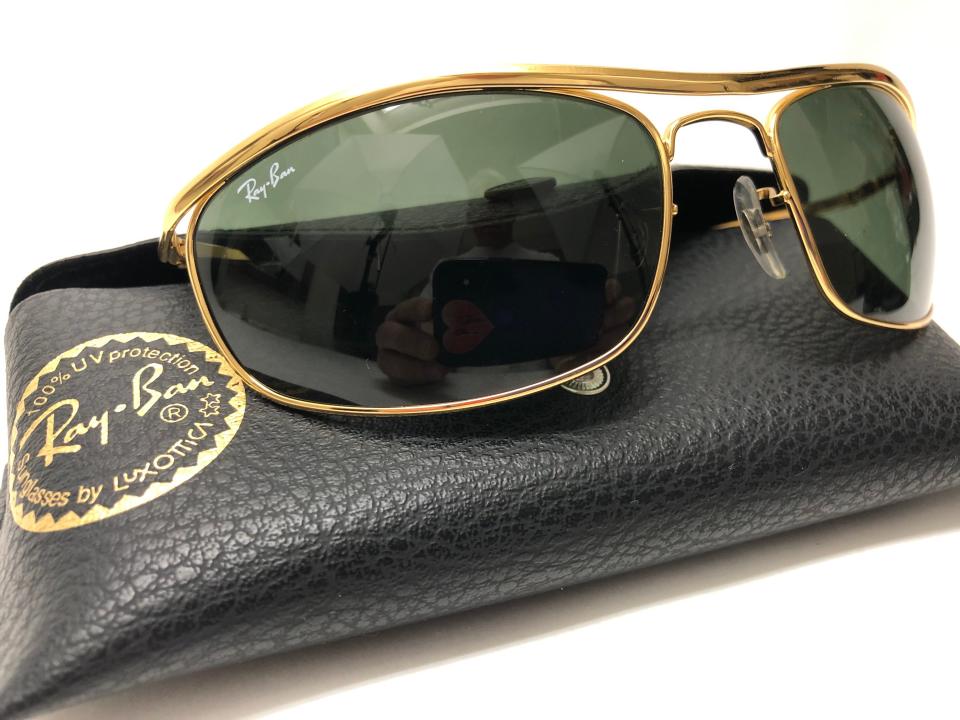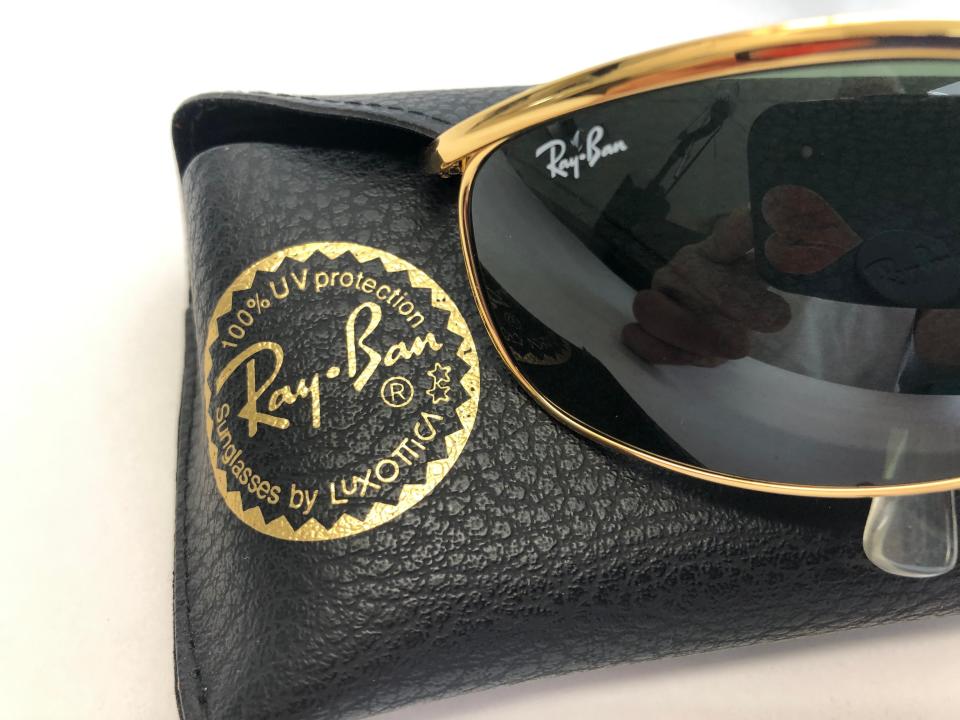Antiques: Ray-Ban cuts through the glare

One of the more confounding things about the pharmaceuticals industry is how they name their new drugs. Mavacamten? Sotyktu? Vutrisiran? Hard to pronounce and impossible to spell, why don't they name them after a person (Edison, Ford) or a place (Berkeley, Patagonia) or even something connected to what they do (Renew, Windex)? And when you consider the terrible handwriting so typical of many physicians, it's a wonder we don't spend most of our lives in the hospital.
Anyway, that's what makes names like Ray-Ban so charming. The name more or less tells you what the product is supposed to do. So, with that in mind, let's take a look at Ray-Ban to see what that name is all about.
As it happened, Ray-Ban was born of another company when, in 1929, Air Force pilot J.A. Macready began working on a way to reduce high-altitude glare. These were the days long before jets could fly six miles above the earth, but even by then planes were approaching the 200 mph barrier at heights of more than 10,000 feet.
Thinner atmosphere meant more ambient light, and the results could be nearly blinding. The risk of a pilot's goggles fogging was also a problem, so Macready, working with Bausch & Lomb, worked for years to address these issues. The first prototype was introduced in 1936, and three years later, the Ray-Ban Aviator hit the market, the name derived from the glasses' ability to reduce or eliminate certain wavelengths of light without overly affecting brightness or detail. As it turned out, the timing was perfect.

Advances in flight came fast and furious during WWII, and by war's end, there were thousands of trained pilots flying at unheard-of altitudes and speed. While American Optical was the first to develop government-issue aviator sunglasses in 1935, the need for more and better glasses was acute by 1941. The first standardized model that gained widespread distribution among the armed forces was the AN6531 Type 1, soon replaced by a Type 2 with darker lenses.
Due to the vast quantities required, a number of makers received government contracts to make these, including Bausch & Lomb. But when General Douglas MacArthur was photographed walking ashore on a Philippine beachhead in 1944, his Aviators firmly in place, the brand was cast in stone.
By then, Bausch & Lomb knew it had a winner on its hands and worked quickly to develop new models. Advances in manufacturing and materials continued over the years with the introduction of tempered glass in 1953 being among the most significant innovations.

As early as 1938, Ray-Bans for hunters and shooters were introduced and by the 1950s, everyone seemed to be wearing them. Such stars as Michael Jackson and Elvis Presley were photographed wearing Aviators, and of course the movie "Top Gun" with Tom Cruise didn't hurt either. More recently, president Joe Biden created his signature look with the help of Ray-Ban 3025s and rarely goes anywhere without them.
Things changed in 1999 with the acquisition of Ray-Ban along with the rest of Baush & Lomb's eyewear division by luxury giant Luxottica. The company's headquarters was moved to Milan, Italy where it continues to churn out new lines, most notably junior and customizable models. Factory-new Aviators sell for around $165 and for about that price you too can look like America's current president. Vintage models sell in galleries like ours starting at around $100 and there are many to choose from. Despite their current overseas address, Ray-Bans are true American icons born in the USA and will always be associated with this country's greatest generation.
Mike Rivkin and his wife, Linda, are longtime residents of Rancho Mirage. For many years, he was an award-winning catalogue publisher and has authored seven books, along with countless articles. Now, he's the owner of Antique Galleries of Palm Springs. His antiques column appears Sundays in The Desert Sun. Want to send Mike a question about antiques? Drop him a line at info@silverfishpress.com
This article originally appeared on Palm Springs Desert Sun: Antiques: Ray-Ban cuts through the glare

